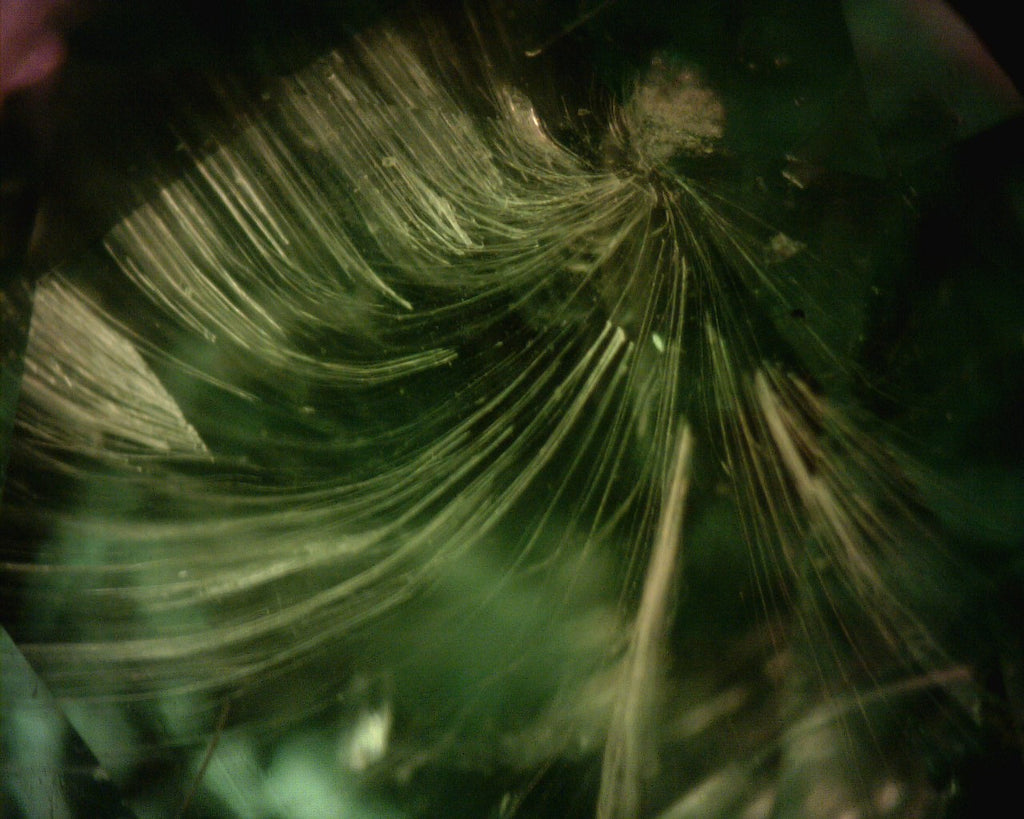Russian Demantoid: What’s the Deal with Horsetail Inclusions?
As many of you know, I have been selling quite a few Russian demantoids on my site in the last year. Initially they came from only one source, old stock, topping out at (exactly) 3.2mm, no heat, and a very bright medium apple green, no secondary yellow. Super nice stuff, great cutting, all priced at $800/ct. I still have some of that stock, but not much, and my source is out. The price, as I said, is the price of older stock, and unless one finds a good connection, Russian prices are now much higher.
Three Colors of Demantoids
And then that’s just what happened. I finally met another demantoid seller with reasonable prices in Tucson! I found Sergey’s booth tucked away in the back of JCK, he was sharing the booth with someone, and he had only Russian demantoids, nothing else. Sergey has a geology degree and taught at the University of Moscow for a while, then – Russian economy being what it is - decided to try himself at gems selling instead. And he was very knowledgeable about his stones. His stock was all well cut, ranging from an olive green to a rich deep forest green – I think industry calls it “emerald green.” Although there is dispute, sometimes “apple green” refers to the darker color, sometimes not. There is agreement though that the top stones should be bright, they should pop, and they should not have any yellow in them. After a long discussion with Sergey and louping many of the gems, I was convinced that the material was legit – it’s a little easier to judge demantoids because you can tell a lot just by louping them and looking at the inclusions. So I took the risk and purchased some pieces. I first showed them to my other source in Tucson, it’s not something one likes to do but I just needed to know I wasn’t making a mistake. Then I took them to the lab in NY. Josh Lents, my colored stone guy at GAL, loved the colors and he explained a lot to me about how to judge the gems.
Demantoid and Kenyan Tsavorite
It’s funny in a way: Russian demantoid is the only gem – that I know of anyway – that is bought because of its inclusions, not despite them. Demantoid inclusions are actually made of asbestos – so don’t chew on them I guess! The typical horsetail type inclusion is only found in Russia (actually I’ve heard conflicting reports about this, but that’s the official story). Not all gems have them, the smaller the piece the less likely it is that it has a horsetail. But some gems have partial horsetails, and others have asymmetrical whispy inclusions that are also quite distinct. I’m including some photos here, please inquire if you are interested in purchasing them. They are getting listed on Etsy as we speak.

Horsetail Inclusions of Demantoid in the Photo
Aside from the Ural mountains in Russia, demantoids (named after the French “demant” for diamond), are also found in Namibia and Iran. Namibian material is considerably more olive in color, though it also has some nice dispersion. Iranian material is quite rare, even rarer than Russian. Some of it is also apple green.

Whispy Inclusions of Asbestos
What about treatment? Some Russian demantoids are heated at 800 F to enhance color (that is considered low heat), but this treatment is undetectable in the laboratory. So the best shot you have at knowing if the gem was heated is to know and trust your source. The treatment is permanent and stable.
You can find some photos of finished jewelry with these demantoids on the pricescope thread here.
And here's a video of one of our gems:
Continue reading




